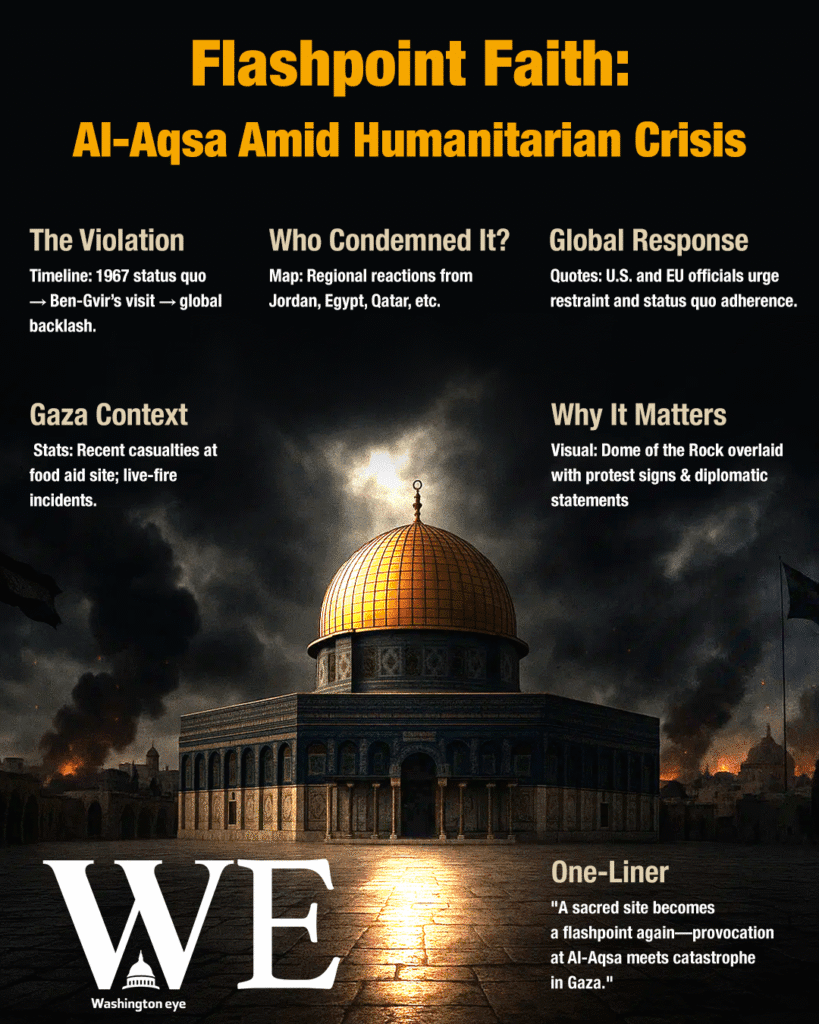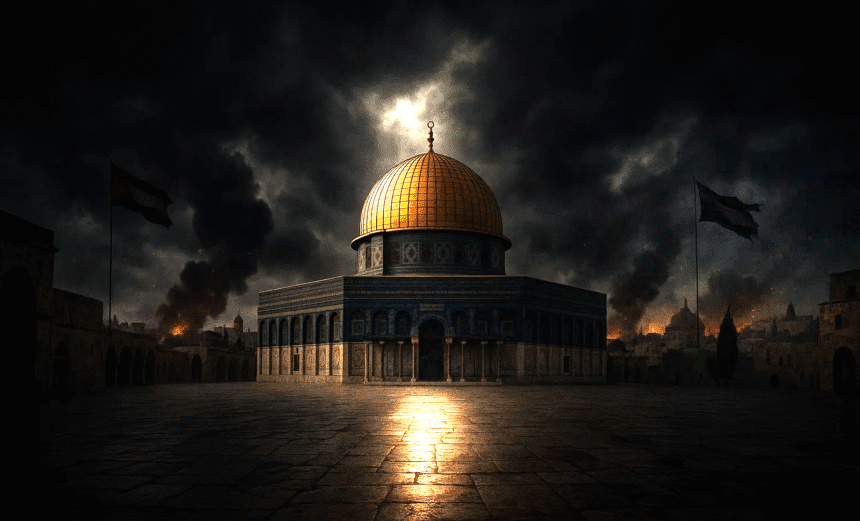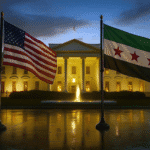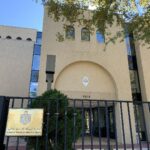On August 3, 2025, Israeli National Security Minister Itamar Ben-Gvir visited the Al-Aqsa Mosque compound in Jerusalem, accompanied by hundreds of Jewish worshippers and security forces. During the visit, Ben-Gvir engaged in public prayer, an act that violates the long-standing agreement known as the status quo, which permits Jewish visitation to the site but prohibits prayer. The incident, occurring on the Jewish day of mourning, Tisha B’Av, has sparked international backlash and reawakened tensions surrounding the religious and political administration of one of the most sensitive sites in the region.
Understanding the Status Quo and Its Significance
The current arrangement at the Al-Aqsa compound, administered by the Jordanian Waqf under Israeli oversight, originated after the 1967 War, when Israel occupied East Jerusalem. Under this framework, non-Muslims may visit the site but are not permitted to pray there. The status quo is not codified into formal international law but is widely regarded as a diplomatic cornerstone that has prevented wider religious conflict over the site. Several United Nations resolutions, including UNSC Resolution 2334, affirm the illegality of Israeli actions that alter the character of East Jerusalem, including unilateral changes to religious governance.
By openly praying at the site, Ben-Gvir’s actions appear to challenge this fragile understanding. This move has been formally denounced by Jordan and other Arab states as a unilateral alteration of the site’s historical and legal character, in violation of long-established agreements and custodial arrangements. This is not the first time Ben-Gvir has made such a visit, but the scale and timing, alongside his ministerial position, have magnified regional and international concern, according to The Guardian.
Political Reverberations Across Borders
Regional Condemnation
The response from the region was swift and unequivocal. Jordan’s Foreign Ministry condemned the visit as a “flagrant violation of international law” and a breach of its custodial role over the Al-Aqsa compound, which is recognized under bilateral agreements and supported by international consensus. The statement emphasized that the visit constituted a “dangerous escalation” that threatens to destabilize Jerusalem and the broader region.
Saudi Arabia similarly decried the move, labeling it among a series of “repeated provocative practices” that “undermine peace efforts” and disregard the sanctity of Islamic holy sites. Egypt also issued a formal condemnation, expressing “deep concern” over actions that could incite violence and compromise efforts to preserve religious coexistence. Qatar joined these criticisms, warning that such actions fuel extremism and heighten tensions across the Muslim world.
These unified statements reflect a broader regional consensus that Ben-Gvir’s actions are not isolated, but part of a dangerous pattern that undermines the stability of one of the most volatile flashpoints in the Israeli-Palestinian conflict.
U.S. and International Response
The United States, while maintaining its alliance with Israel, expressed clear disapproval of the visit. A spokesperson for the State Department emphasized the importance of preserving the historical status quo at holy sites and warned that provocations in such sensitive areas risk “inciting violence and undermining regional stability”.
European states echoed this sentiment. France and the European Union both called on Israeli authorities to prevent unilateral actions that could inflame religious tensions and complicate diplomatic efforts. Their statements underscored the broader international view that any alteration of the site’s governance should occur only through dialogue and mutual agreement, not unilateral gestures.
Wider Implications: Religious, Strategic, and Humanitarian Dimensions
Religious Escalation and the Symbolic Battleground
The Al-Aqsa compound is central to both Islamic and Jewish identity, making any disruption (symbolic or material) a potential trigger for widespread unrest. Past escalations, including the 2021 and 2022 clashes during Ramadan, have shown how incidents at the site can spiral into wider regional or even military confrontations.
Ben-Gvir’s prayer did not spark immediate clashes, but Palestinian authorities and Islamic organizations issued warnings that continued violations would be met with “resistance”. The symbolic weight of the action, particularly during a religious day of mourning, cannot be overlooked as it fuels narratives of encroachment and contestation.
Humanitarian Optics and Gaza Context
The incident came amid the grave conditions in Gaza, where dozens of Palestinians were killed at a food aid site just days earlier. Human rights groups and UN agencies have condemned the use of live fire against civilians seeking aid. In this context, Ben-Gvir’s visit is seen by critics as exacerbating issues and distracting from the ongoing humanitarian crisis, deepening perceptions that political agendas are being prioritized over civilian lives.
A Final Note
Ben-Gvir’s visit to Al-Aqsa was not an isolated act, it disrupted a decades-old religious understanding and triggered wide condemnation. Its timing, amid a worsening humanitarian crisis in Gaza, underscored a growing disconnect between political maneuvers and the urgent need for restraint and relief.
As tensions escalate on multiple fronts, the incident highlights how symbolic provocations can have real-world consequences, deepening instability at a moment when diplomacy and de-escalation are most needed.



















